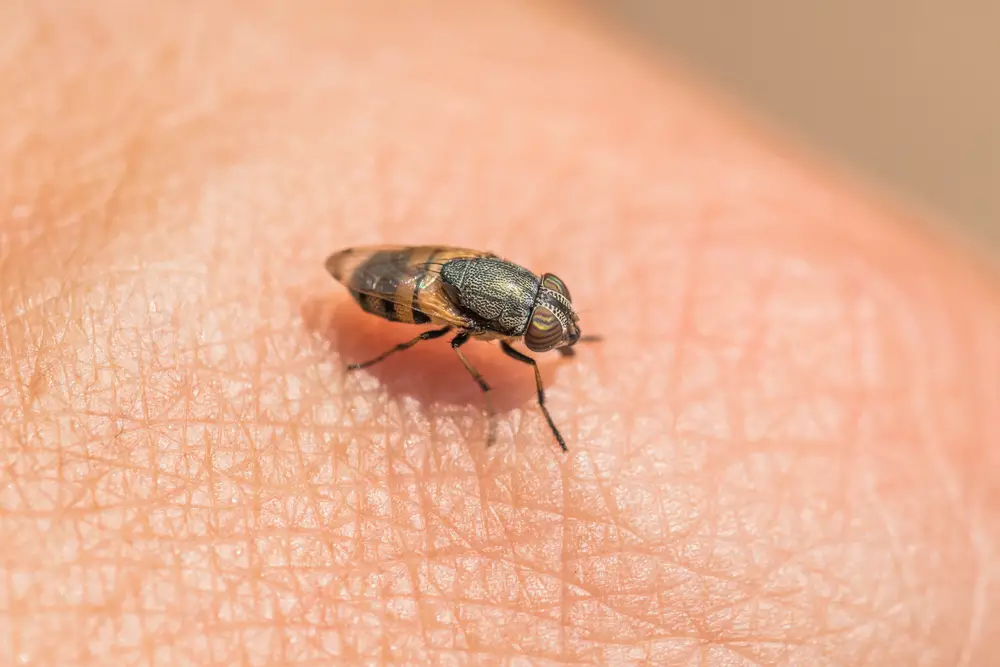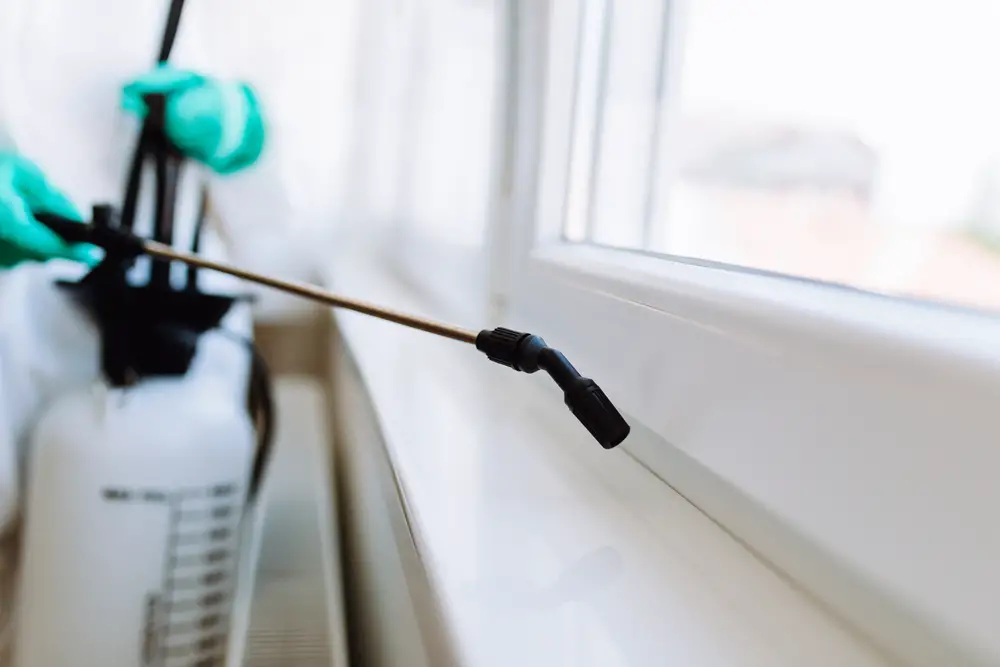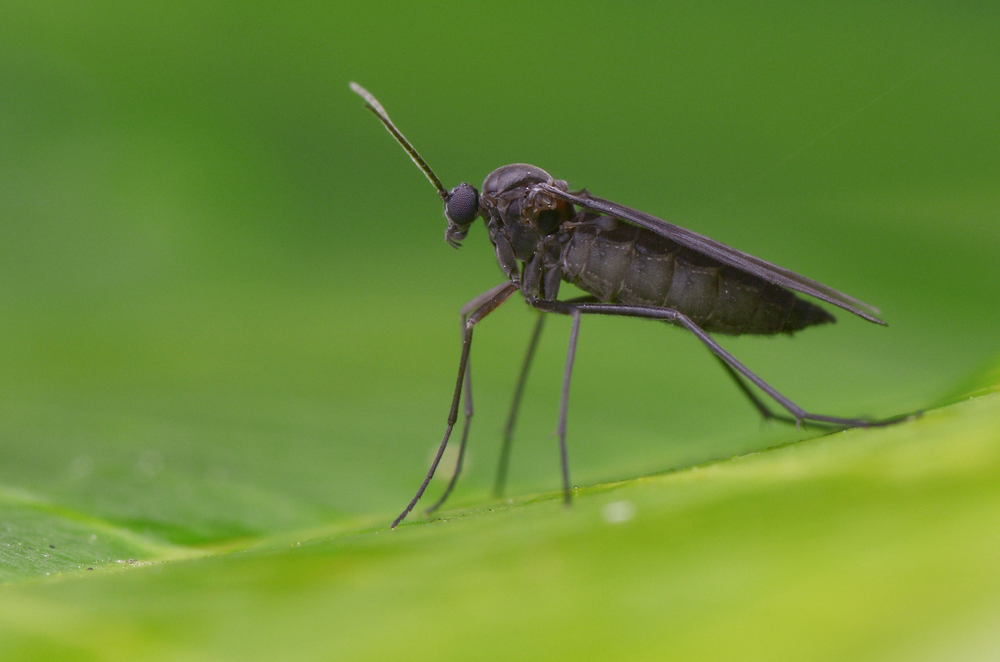Do you know what the difference between fruit flies and gnats is? If not, don’t worry – you’re not alone. Many people are unsure of the distinction between these two types of small flying insects.
In this blog post, we will explore the difference between fruit flies and gnats and teach you how to tell them apart!
What Is The Difference Between Fruit Flies And Gnats?
Most people use the terms fruit fly and gnat interchangeably, but there is a big difference between the two.
Fruit flies are true flies, meaning they have two wings, while gnats are more closely related to mosquitoes and have only one pair of wings.
Fruit flies are also attracted to rotting food, while fungus gnats are more likely to be found near damp surfaces like drains or potted plants and potting soil.
Finally, fruit flies typically live for around 30 days, while gnats only live for about 10 days.
So what’s the best way to get rid of them? Unfortunately, both fruit flies and gnats are attracted to the same things, so the same methods will work for both.
Some tips include:
- Cleaning up any spills or crumbs immediately
- Keeping food covered
- Dumping out standing water
- Using fly traps or pesticides
What Are Fruit Flies And Gnats?
Fruit flies and gnats are small flies, winged insects that are often found near food sources. Fruit flies are attracted to ripe fruits and vegetables, while gnats are attracted to decaying plant matter. Fruit flies belong to the tephritidae and Drosophilidae families.
However, fungus gnats belong to the suborder Nematocera and include the Mycetophilidae, Anisopodidae, and Sciaridae families.
Both lay eggs in these moist and fertile environments. The fruit fly larvae feed on the organic matter around them.
After a few weeks, the larvae pupate and emerge as adult insects.
They are often considered nuisances, as they can be drawn to areas where food is prepared or served.
In addition, their larvae can contaminate food with bacteria. However, both can also be beneficial to humans.
They help decompose organic matter, and their larvae are an essential food source for many animals, including fish, amphibians, and reptiles.
As a result, these insects play an essential role in the ecosystem.
Read More: Why Do Gnats Fly In Your Face?
What Do Fruit Flies And Gnats Eat?

You may have noticed tiny black insects flying around your kitchen or fruit basket and wondered what they are. These little pests are called fruit flies or gnats and are attracted to the sugars in ripe fruit.
The female fruit fly lays her eggs on the surface of the fruit, and the larvae hatch and feed on the fruit’s flesh. In addition to causing damage to fruits and vegetables, fruit flies can also spread disease.
They can pick up bacteria from spoiled food and transfer it to fresh food when they land on it. As a result, taking steps to control fruit fly populations in your home is essential. One way to do this is to keep ripe fruits and vegetables in the refrigerator.
You can also trap fruit flies by placing a piece of ripe fruit in a jar covered with plastic wrap.
Punch a few holes in the wrap, and the fruit flies will be drawn into the jar and unable to escape.
Taking these simple precautions can help prevent fruit fly infestation in your home.
Read More: Do Gnats Bite?
Where Do Fruit Flies And Gnats Live?
Fruit flies and gnats are small, winged insects that are often found near food sources. While they are not harmful to humans, they can be a nuisance, especially when they swarm in large numbers.
But where do these insects live?
They both are attracted to two things: food and water. As a result, they are often found near both sources, such as kitchens, garbage cans, and compost bins. They are also drawn to any fruit or vegetable beginning to rot.
This is because the flies lay their eggs on fermenting fruits, which provide a ready food source for the larvae when they hatch.
Once the larvae have matured into adults, they will leave the decaying matter in search of new food and water sources.
As you can see, they can live just about anywhere there is food and water.
However, they are most commonly found near sources of rotting fruit or vegetables.
If you have these insects in your home, clean up any decaying matter promptly to prevent them from laying eggs there.
What Damage Can Fruit Flies And Gnats Cause In Your Home Or Garden?
If you’ve ever seen a fruit fly or fungus gnat buzzing around your home or garden, you may have wondered if they’re harmful. After all, they are tiny flying insects, and most insects can cause some damage.
So, what kind of damage can they cause in your home or garden?
They are attracted to decaying matter, such as overripe fruit or rotting vegetables.
As they feed on this decaying matter, they can spread diseases and bacteria.
In fact, fruit flies have spread more than 60 different types of bacteria, including E. coli and Salmonella.
In addition to spreading disease, they can also damage plants.
As they feed on the leaves, stems, and fruits of plants, they can cause the plant to wilt and die. In some cases, their feeding can lead to the plant’s produce being unmarketable.
So, while they may not seem like much of a threat, they can cause significant damage to your home or garden.
If you have them in your space, it’s essential to get rid of them as soon as possible.
How To Get Rid Of Fruit Flies And Gnats?

Many people are bothered by them in their homes or gardens. These tiny insects are not only a nuisance but can also carry diseases.
Fortunately, there are several effective ways to get rid of them.
One simplest and most common method is using a fly trap. Many different types of fruit fly traps are available, but they all work by attracting the insects with bait and trapping them.
Another standard method is to use an insecticide. Insecticides come in many forms, including sprays, powders, and foggers; they work by killing the insects on contact.
For a more natural approach, you can try using beneficial predators. Ladybugs and green lacewings are two examples of predators that will eat them. You can purchase these beneficial insects online or at a garden center.
Finally, you can also deter them by ensuring that your home or garden is clean and free of ripe fruits and vegetables.
By taking these measures, you can get rid of them for good.
Ways To Prevent Fruit Flies And Gnats
As the weather gets warmer, you may notice more fruit flies and gnats in your home. These pesky insects are attracted to damp, moist soil outdoors and are often drawn to fruit or other sweet snacks.
While they may seem harmless, these insects can carry disease and spread harmful bacteria.
Fortunately, there are a few preventative measures that you can take to stop them from invading your space.
One of the best ways to prevent fruit flies and soil gnats is to keep your kitchen clean. Be sure to immediately wipe down countertops and floors and garbage disposal of any food scraps.
You should also avoid leaving fruit out on countertops for extended periods. If you notice any fruit flies or gnats in your home, clean up the area immediately.
You may also consider using traps or baits to lure them away from your living space.
Taking a few simple precautions can help kill fruit flies from taking over your home.
Be sure to keep your kitchen clean and free of food debris, and consider using traps or baits if you start to see an increase in these pests.
You can keep your space insect-free all season long with a little effort.
Conclusion
Although they both are attracted to the same things, there are some critical differences between them. Fruit flies are more likely to spread disease than gnats, and they can also damage plants. Gnats are not as likely to spread disease, but they can still cause damage to plants.
There are several ways to get rid of fruit flies and gnats, including fly traps, insecticides, beneficial predators, and cleanliness. You can eliminate these pests from your home or garden for good by taking these measures.
What are your thoughts on gnats and fruit flies? Have you ever had a gnat infestation with them in your home or garden? Let us know in the comments below.
Keep Reading:
Where Do Dragonflies Go When It Rains?
Driven by a passion for those tiny creatures that rule our world, we at Bug Domain strive to be your go-to resource for information on insects.



